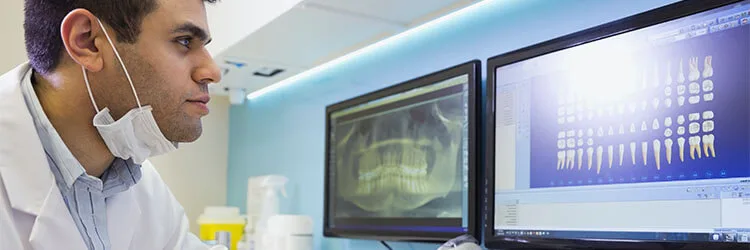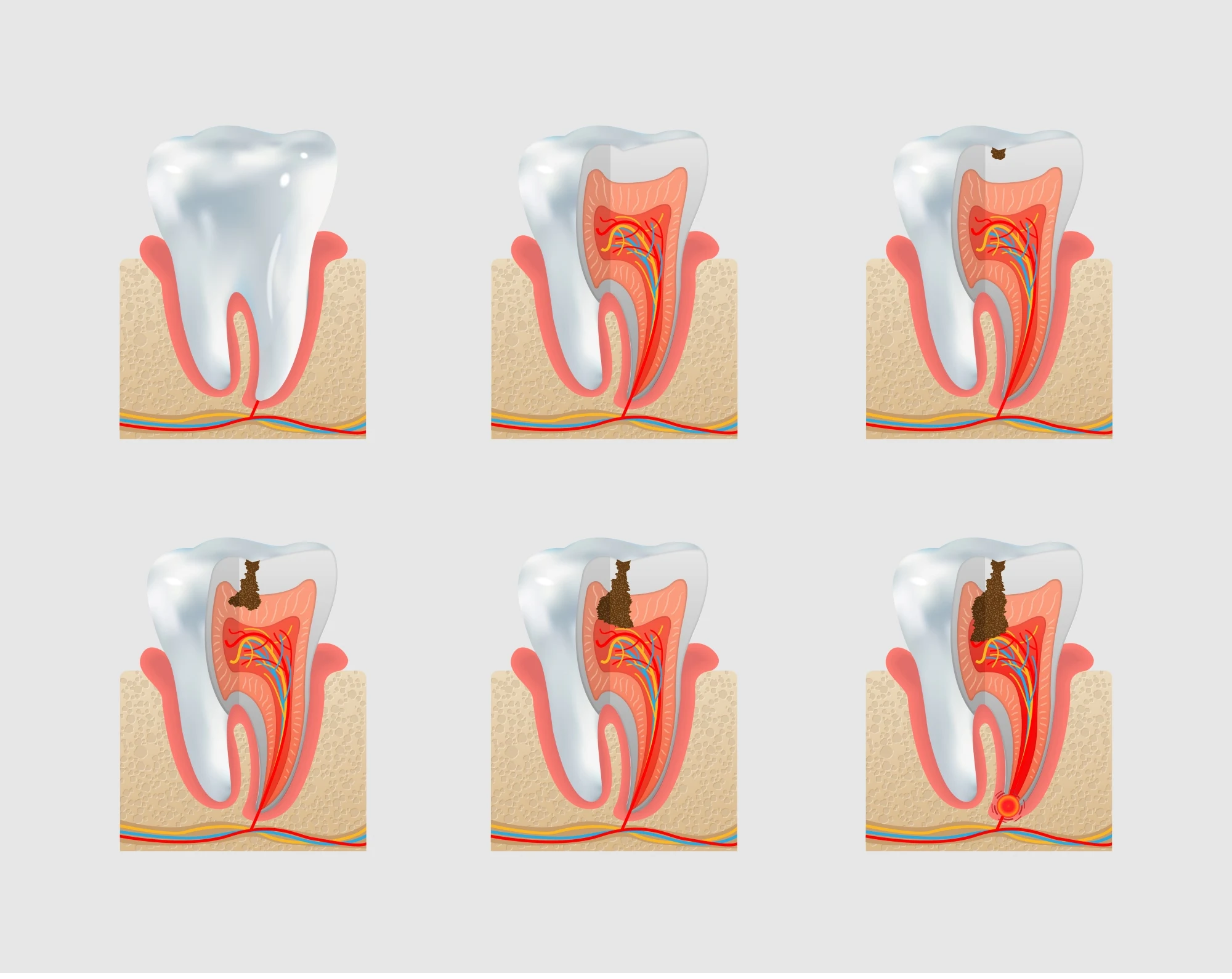
Tooth decay is one of the most common causes of tooth pain. Tooth decay begins when the enamel begins to break down, creating pockets of decay on the surface of the teeth. Decay results from acidic damage to the tooth structure produced by bacteria that lives in plaque, the sticky film formed by the protein found in one’s saliva metabolizing sugary foods left in the mouth. Some forms of tooth decay can be treated by maintaining good oral care habits and regular trips to your dental professional. The following image can help you identify and understand tooth decay, so you can help prevent it.
Stage 1: White Spots
The first stage of tooth decay begins when chalky white areas on the surface of the tooth appear due to the loss of calcium and build-up of plaque. Bacteria in the plaque then begins to metabolize sugars from food consumed. The buildup of these acids causes tooth enamel to deteriorate, a process referred to as demineralization of the tooth surface. At this phase, tooth decay might still be reversible with the proper treatment––which should be discussed with your dental professional, such as using appropriate brushing technique, a fluoride toothpaste, and applying a topical fluoride treatment.
Stage 2: Enamel Decay
In stage two of tooth decay, the enamel starts breaking underneath the tooth’s surface. At this stage, the natural remineralization process is unable to restore the proper enamel and minerals, causing a lesion to form within the tooth. As the decay persists, the surface of the tooth risks breaking, which is irreversible. If one’s tooth breaks, one should seek dental attention immediately.
Stage 3: Dentin Decay
Stage three of tooth decay is also known as dentin decay. If left untreated, bacteria and acids will continue to dissolve the enamel and the lesion risks reaching the dentin. The dentin is the part of the tooth that exists in between the enamel and the pulp. Once decay moves to the dentin, the level of pain begins to intensify and a sharp pain may be experienced in the infected tooth. When enough of the sub-surface enamel is weakened by the loss of calcium and phosphate minerals, the enamel collapses and a dental cavity is formed. At this point, a dental filling will most likely be required to restore the tooth.
Stage 4: Involvement of the Pulp
The pulp is considered the tooth’s center. It is made up of living tissue and cells that are referred to as odontoblasts. Cells of the pulp produce dentin, which acts as the connective tissue between the enamel and pulp. If the pulp of a tooth gets infected with bacteria, pus then forms which inadvertently kills the blood vessels and nerves in the tooth. This is commonly known as a toothache and can cause constant pain. At this stage, the most common course of treatment is root canal therapy.
Stage 5: Abscess Formation
Abscess formation is the final stage of tooth decay and by far, the most painful. Once the infection reaches the root tip of the tooth, the conjoining bones risk infection as well. The gums and tongue often swell which can affect speech and puts you at risk for other diseases. At this stage, additional oral surgery may need to be performed.
Related Articles
Sign Up
for expert advice and exclusive offers







